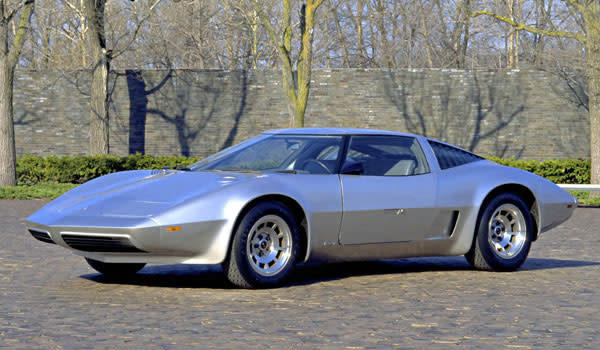11 concept cars that should have made it

MORE AT POPULAR MECHANICS
Concept cars are staples at major auto shows, but the cars typically look much different if and when they make it to production. In many cases, that's a mistake. Here are 11 times when changing a concept car, or failing to put it into production at all, was a big mistake.

1973 Chevrolet AeroVette Concept
If one thing had changed back in the early 1970s, today's Corvette would be midengine.
In 1969, Zora Arkus-Duntov (the father of the Corvette) built the experimental XP-882, a midengine Corvette concept. Unfortunately, John DeLorean, then Chevrolet's general manager, put the project on hold. To blunt the media impact of Ford's introduction of the midengine Pantera, DeLorean authorized a refurbishment of the XP-882 in 1972. The car emerged as the XP-895, with its transverse V-8 replaced by a four-rotor Wankel engine producing 420 hp.
While GM scrapped its rotary development program in 1973, the idea of a midengine Corvette was well received. Nevertheless, the Corvette remained front-engine/rear-drive for cost reasons. Had the midengine XP concept made production, then Corvette today would be perceived as a more apt competitor to Ferrari and Porsche.

2003 Dodge Tomahawk
With a vibe that would be at home on the set of Blade Runner, the outrageous Viper-powered Tomahawk represents the best and worst of concept cars.
Concepts are at their worst when, like the Tomahawk, they are completely nuts. Had Chrysler ever seriously considered building this thing, its lawyers would have killed the project out of fear the public would find out the company's leaders had all lost their minds.
But put your pragmatism to the side for a second and consider this: The Tomahawk's 8.3-liter V-10 makes 500 hp. Theoretically, the engine running through a two-speed gearbox could power the 1500-pound bike to 60 mph in just 2.5 seconds, with a max of around 300 mph.
Still, given that Nissan is producing a limited number of Juke Rs, it's clear that there's a niche market out there for crazy. Are you listening, Chrysler?

1967 Dodge Deora Concept
The very first run of Hot Wheels included a golden-colored futuristic pickup called the Deora. While the truck looked like a fanciful rendering by a toy-car designer, it was, in fact, a scale model of a real vehicle.
Built in Detroit by the famous Alexander brothers (Mike and Larry, who also helped Chili Catealo with the famous Little Deuce Coupe), the Deora was based on a Dodge A100 cab-over van, and powered by a 101-hp 170-cubic-inch Slant-6 engine. Dodge promoted the Deora as a futuristic pickup concept. We're still waiting.

1969 Chevrolet Astro III Concept
To truly appreciate GM's Astro III concept, you've got to view it through 1969 eyes. NASA's space program was the envy of the world, having reached the moon. Transistors were replacing tubes in radios and jets were replacing prop-driven commercial aircraft. High-tech and space age reigned.
The sleek, gas turbine–powered 1969 Chevrolet Astro III two-seater foreshadowed alternative powertrains and advanced automotive technology. The turbine weighed just 139 pounds but cranked out 317 hp. The wide-set rear wheels and narrow-track front wheels foresaw the DeltaWing racer by four decades. The Astro III's closed-circuit TV rearview mirrors and drive-by-wire steering also show the concept's advanced thinking, as did the powered and cantilevered forward-opening canopy.

1999 Pontiac Aztek Concept
Back in the bad old days at GM, the people in charge of vehicle manufacturing had huge control over how vehicles looked. Designers knew what they wanted GM's first crossover to look like, but in the convoluted corporate world of the 1990s, GM own manufacturing team wouldn't give it to them. The excuse? It would have cost too much.
That decision cost GM dearly... and not just in dollars.
The hideous slab-sided production horror that debuted in 2001 shares little with the 1999 concept pictured here. Their proportions are completely different. The most visible alteration was to the angular roof of the concept that looked much like the production Chevrolet Equinox.
If the concept had made it to production, the fate of the Aztek would have likely been much different. Instead, the Aztek earned its title as the ugliest car in the world, and helped kill off the Pontiac brand.

 Yahoo Autos
Yahoo Autos 
